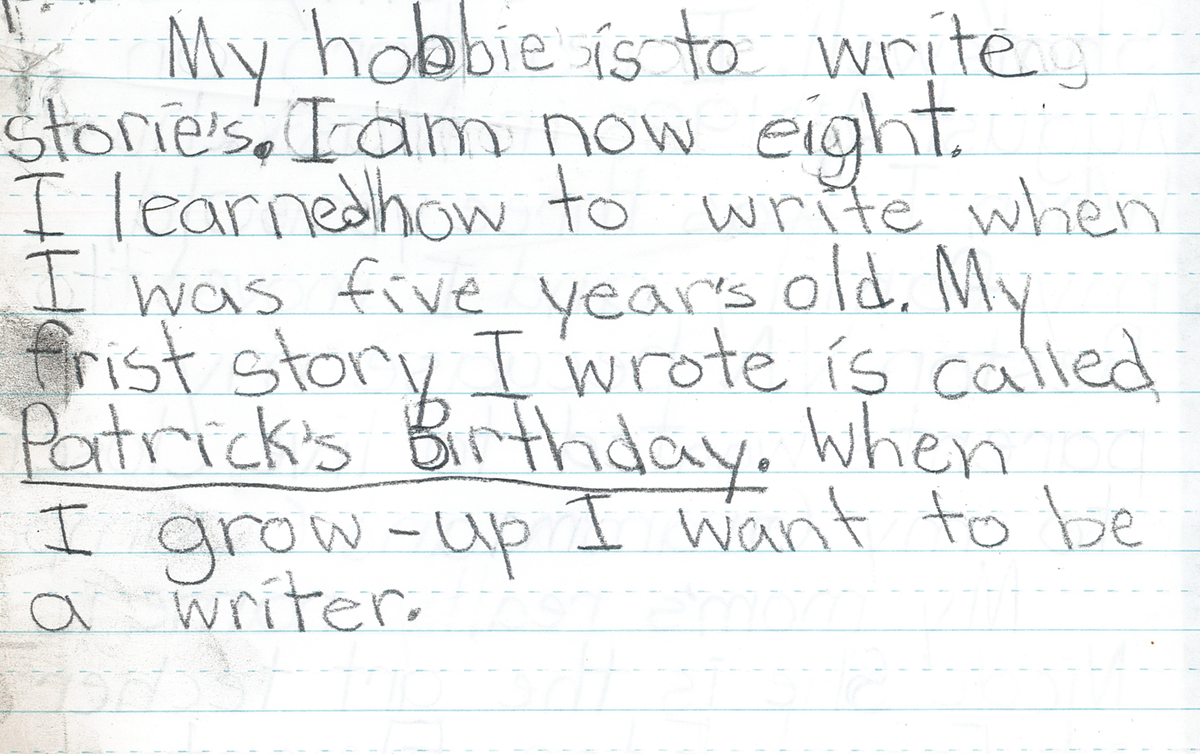Drawing: A Language for Learning
By Nicolette Harrington, MoNA Link Coordinator
When I was asked to create a blog post for MoNA and share my passion for art education, the first thing I thought of was the importance of teaching drawing as well as teaching writing to enable communication and literacy. I have been in art rooms with elementary school students for over 30 years, but my strongest influences are lessons I learned from my own children. Every morning when my daughter was in first grade, she drew a picture and wrote her first sentences in a journal describing her life. I gave her the nickname “Doodle” because of her fluency and mastery of mark-making. Her creativity was immediately obvious. She taught me how drawing helped her understand herself and connect to the ideas she wanted to share. She learned to love drawing and writing.
I believe a drawing is the most basic and direct form of communication. It is important not to judge a drawing narrowly with the criteria of advanced technical skills. The goal is to understand what it communicates. When children discuss their drawings, the dialogue serves a very important purpose—they can practice translating their visual thinking into words.
The interdependence of words and images is the most powerful force of intellectual and emotional development we have. When you join words and images, a deeper meaning is possible. The arts can provide ways to build perception, confidence, and strength when the visual helps students acquire language skills.
Children who think and learn visually process information through images instead of words. They often do not progress well academically, perform poorly on tests, and often suffer poor self-esteem. The reason a student can’t write or spell might be because they are a visual learner—at least partially. (I was one of those children.)
Important note: Visual learners are not just artists; scientists, biologists, mathematicians, and engineers are highly inclined to be visual learners.
Children who think and learn verbally are better served by the common teaching methods in public schools. Verbal learners are comfortable with words and are not afraid to participate in class discussions. Speaking, listening, reading, and writing appear to be the most essential skills in the educational process—it is assumed that the best way for learning is through words.
As well as teaching to read words, teach children to look and learn to decode the images on the page. Drawings and diagrams explain the words on the page. Pictures teach how to find meaning in words on the page. Spend time exploring the art done for the illustrations.
Is it easier to learn to write than to learn to draw in ways that represent ideas effectively? Or is it that drawing skills are simply not taught? Expecting children to draw through an occasional lesson is unrealistic. I recommend daily drawing instruction divided into observational, memory, imaginative, verbal to visual, and experimental drawing activities.
The word DRAW can make some people nervous.
Maybe someone judged their early attempts. Insecurity contributes to the use of patterns and pre-packaged worksheets. These insecurities and misunderstandings can be alleviated when the focus is on the child’s learning. Be encouraging and understand how drawing can be a tool for learning to use both visual and verbal modes of expression.
Teaching drawing at the same time as teaching writing will enable greater literacy.
I taught narrative-drawing to strengthen visual and verbal skills, using children's natural inclination to tell stories with their drawings. They recognize things before naming them. (They don't really know them until they can name them.) A picture that represents what they know is a common way to confirm understanding. Encouraging students to write and draw simultaneously will begin to create images in their minds. Pictures will become more expressive and creative, and so will writing.
Here is a student example. It was given to me by a very quiet 4th grader. He illustrated anger, joy, sadness, and shock.
I’ve heard students say:
"Drawing helped me because I could look and say what I thought."
"Drawing helped me remember details."
"Drawing helped me because it was more fun, and I could see what was happening."
"Sometimes I have the answer in my head, but I don’t know how to say it. When I see it, I can say it."
"Drawing is helpful because you can see what you are thinking, and it is easier to write down. When I start to draw, it is much easier to write."
"Drawing gives me ideas"
I have linked art and writing because of the similarities in thought and process inherent in both subjects. Each is a process of exploring our thoughts and ideas and finding ways to share them with others. I created the following chart to show how the steps in the creative process are similar for both writing and art.
My next post will be about ten principles of visual expression that help decode pictures. It is important that we are all advocates for art programs serving schools in our area. Thank you for your support of art education programs at MoNA! Please send your narrative-drawings to:
education@museumofnwart.org
— Nicolette Harrington. March 29, 2022



